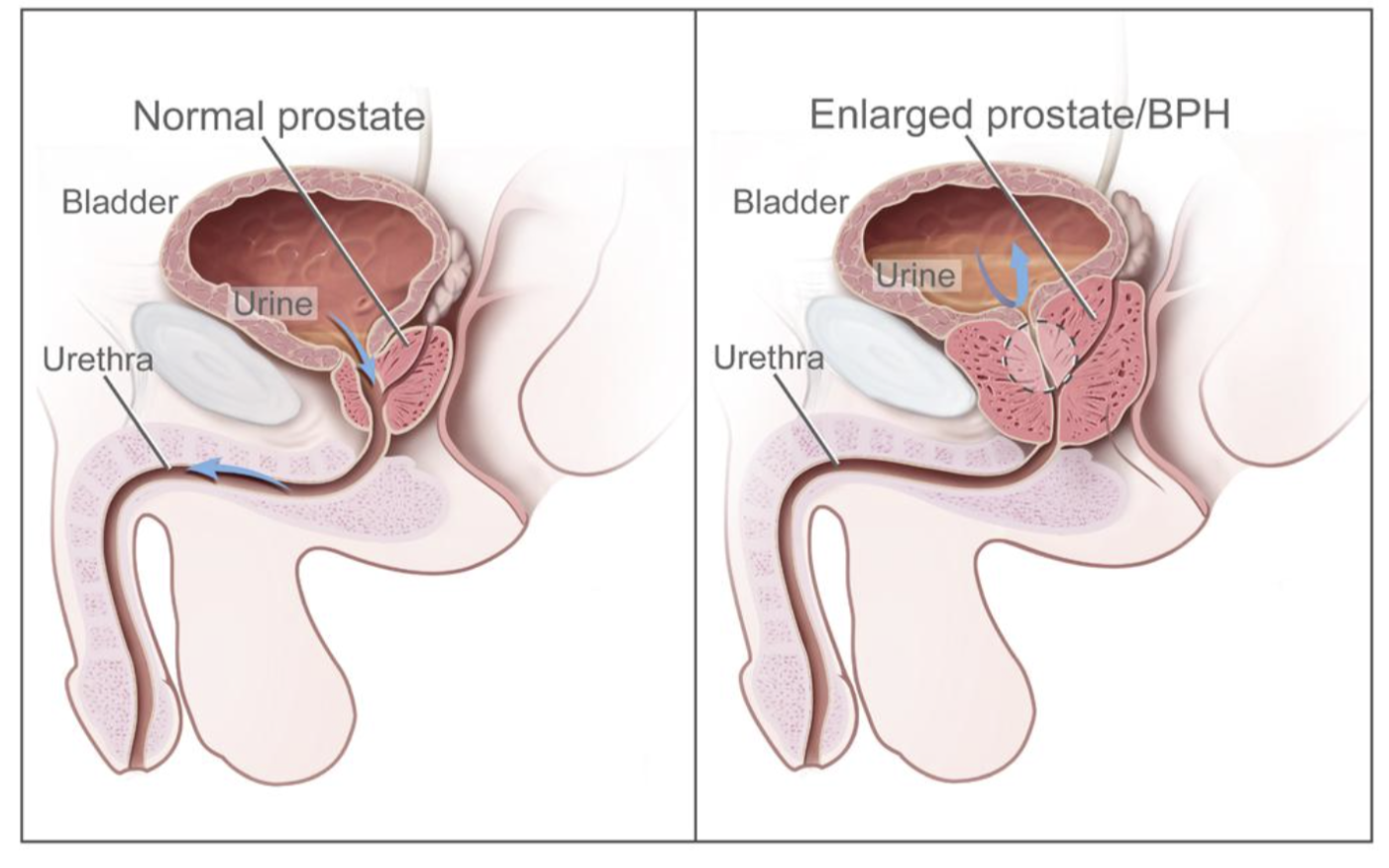Prostate Artery Embolization
Prostate enlargement (BPH) Is a common condition that affects most men, starting at age 40.
Our BPH newsletters and webpages provide an overview of the evaluation of the condition, and a review of the treatment options available.

What is prostate artery embolization? How does it work?
Prostate artery embolization (PAE) has emerged as an alternative to more invasive surgical procedures.
PAE is an interventional radiology procedure that injects small particles directly into the arteries (blood vessels) that supply blood to the prostate, which leads to devascularization (decrease in blood supply) of the obstructing portion of the prostate.
When the prostate reduces in size, (because the blood supply is slowed), there is lessening of obstruction along the urinary pathway and less pressure on the bladder.
Where does prostate artery embolization fit in with the other treatment options for BPH?
The standard approaches to address urinary bother associated with the enlarged prostate are procedures that remove the part of the prostate that blocks the urinary pathway, and include TURP, greenlight laser, and HOLEP. These procedures can provide excellent outcomes for patients but are associated with potential hazards which can include sexual dysfunction, bleeding (which may require blood transfusion), and incontinence.
Alternative minimally invasive surgical techniques now available include Urolift and Rezum. Of note, the minimally invasive procedures are restricted by the size of the prostate, and if the prostate is too large, then the minimally invasive techniques are less likely to provide benefit.
PAE is an increasingly used treatment option for the management of lower urinary tract symptoms associated with prostate enlargement (BPH). It provides an innovative and effective alternative to surgical procedures and offers the opportunity for fewer hazards related to treatment.
How is prostate artery embolization done?
The PAE procedure is carried out by an interventional radiologist. A tiny catheter is placed through the artery in the groin (called the femoral artery) and directed under x-ray vision to the prostate artery, so that small particles can be placed into the prostate artery to decrease the blood supply to the prostate.
It is an outpatient procedure, carried out with sedation or a ‘twilight sleep’, and does not require general anesthetia.
What are the benefits? What are the potential hazards?
The PAE procedure can lead to improvement in urination, with reduction of bothersome symptoms and improvement in quality of life.
Potential burdens of treatment include the post-operative temporary presence of blood in the urine, blood in the semen, and a temporary (5-7 days average) increase in urinary frequency. There is a rare potential for urinary tract infection, or urinary catheterization or skin discoloration, however these are not encountered frequently. Patients typically do not have bothersome pain after the procedure. The procedure does not also typically involve placing a urinary catheter or anything via the penis.
Take home message
PAE is an exciting addition to the treatment options available to help men with BPH.
Prostate Artery Embolization Pre-procedure Instructions
Prostate Artery Embolization Discharge Instructions
Urologist Dr. Roberts discusses Prostate Artery embolization
Interventional Radiologist Dr. Piechowiak discusses Prostate Artery Embolization
PAE Webinar with Dr. Piechowiak
Print PageContact us to request an appointment or ask a question. We're here for you.



